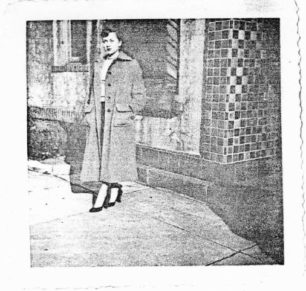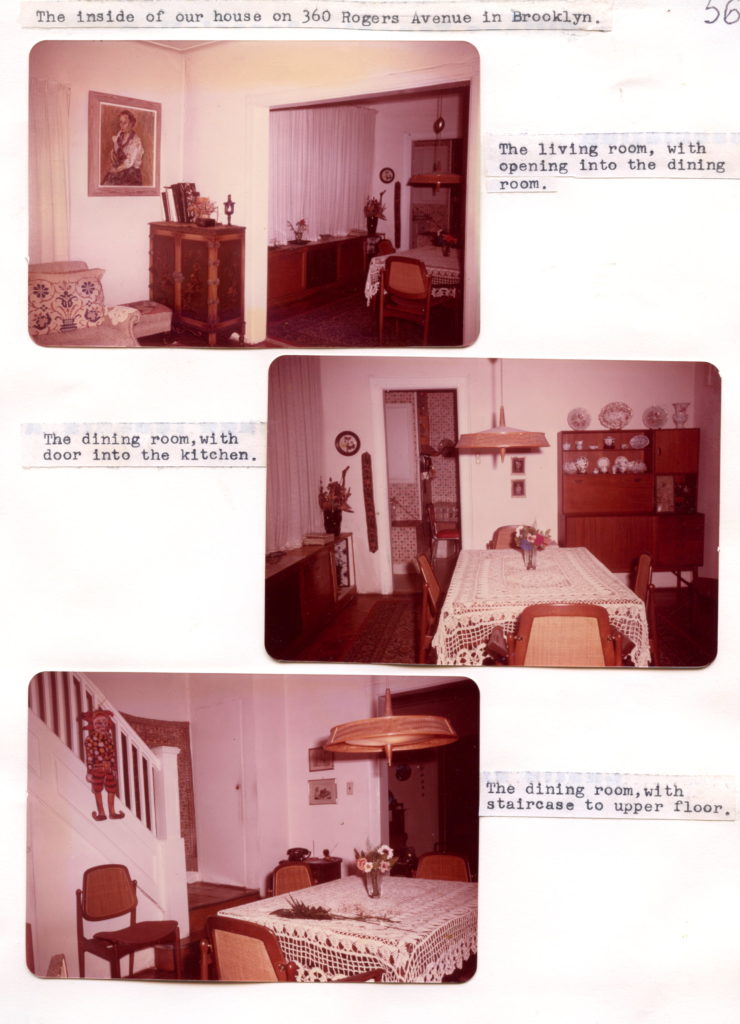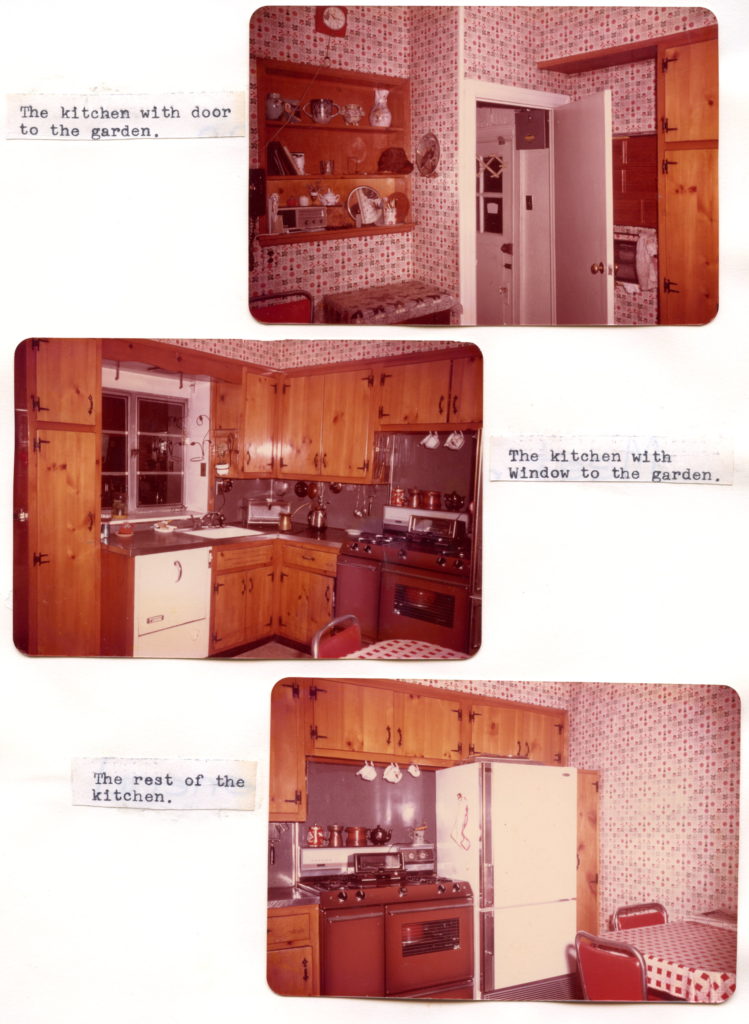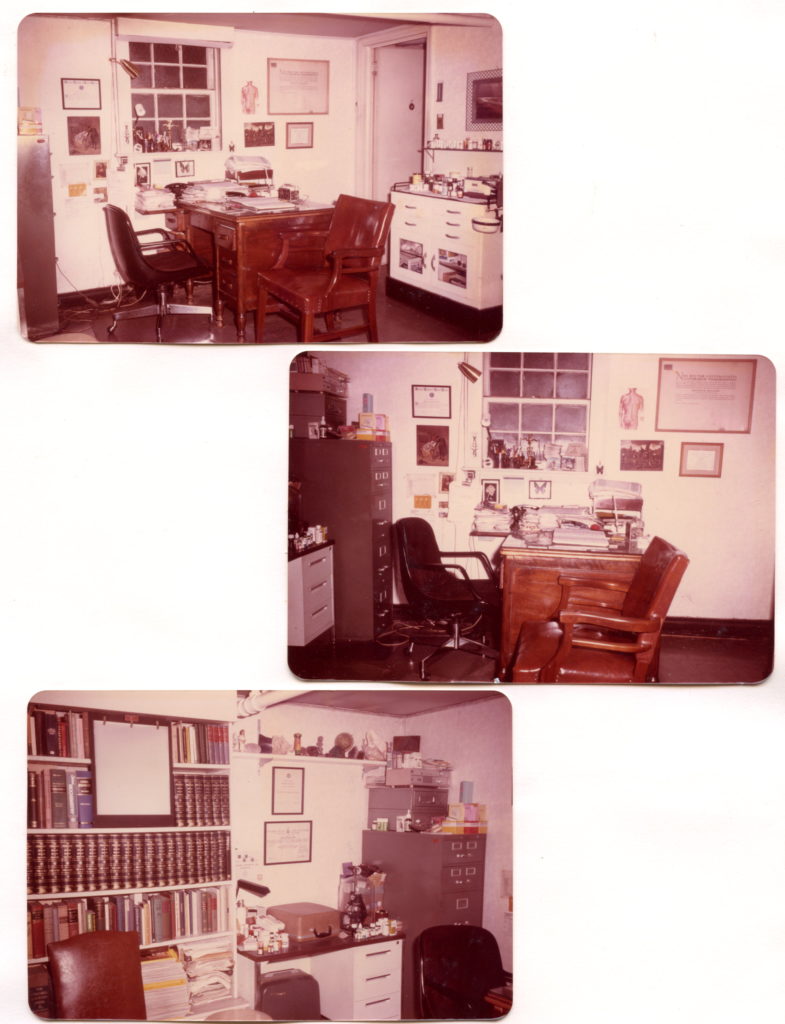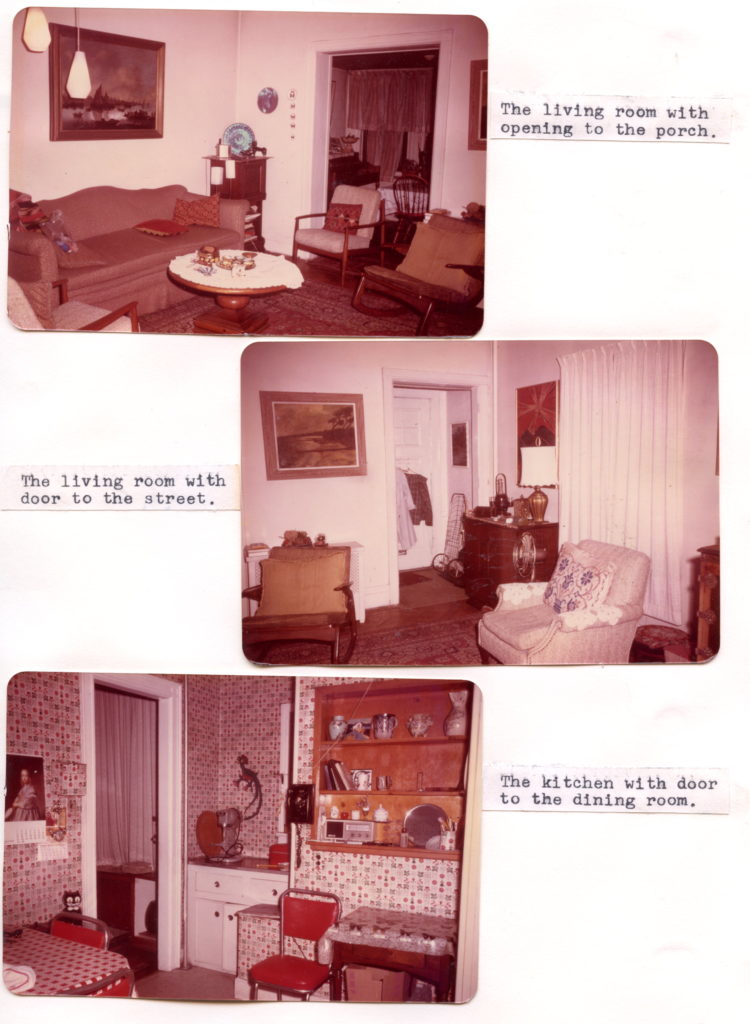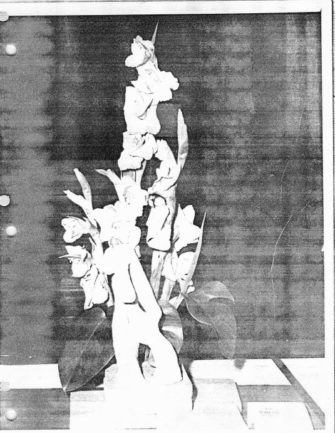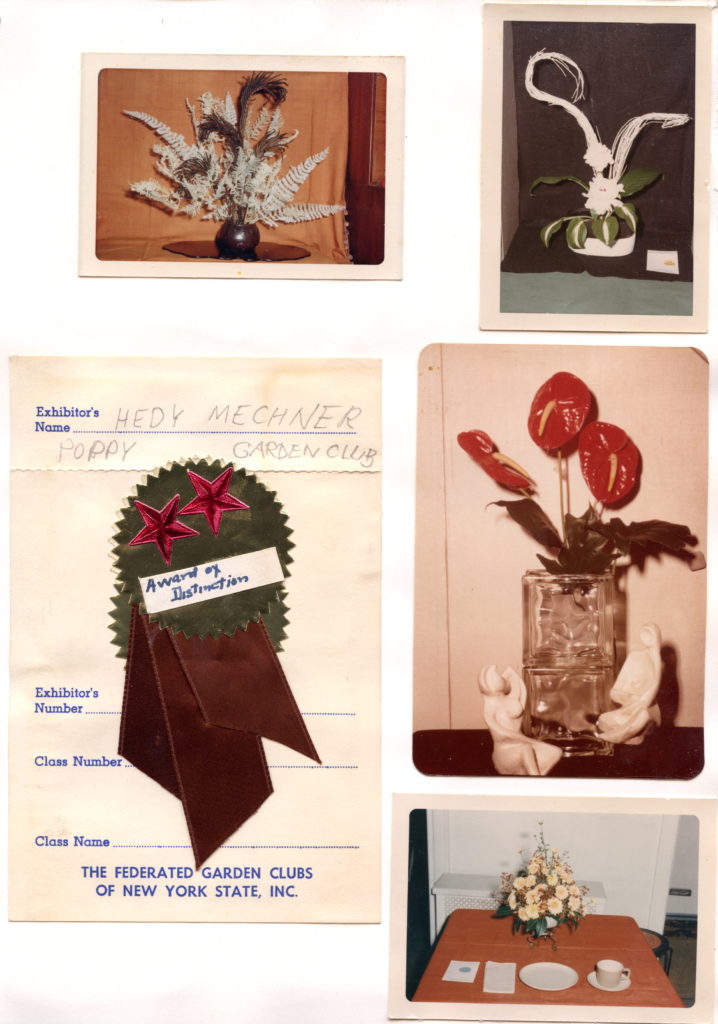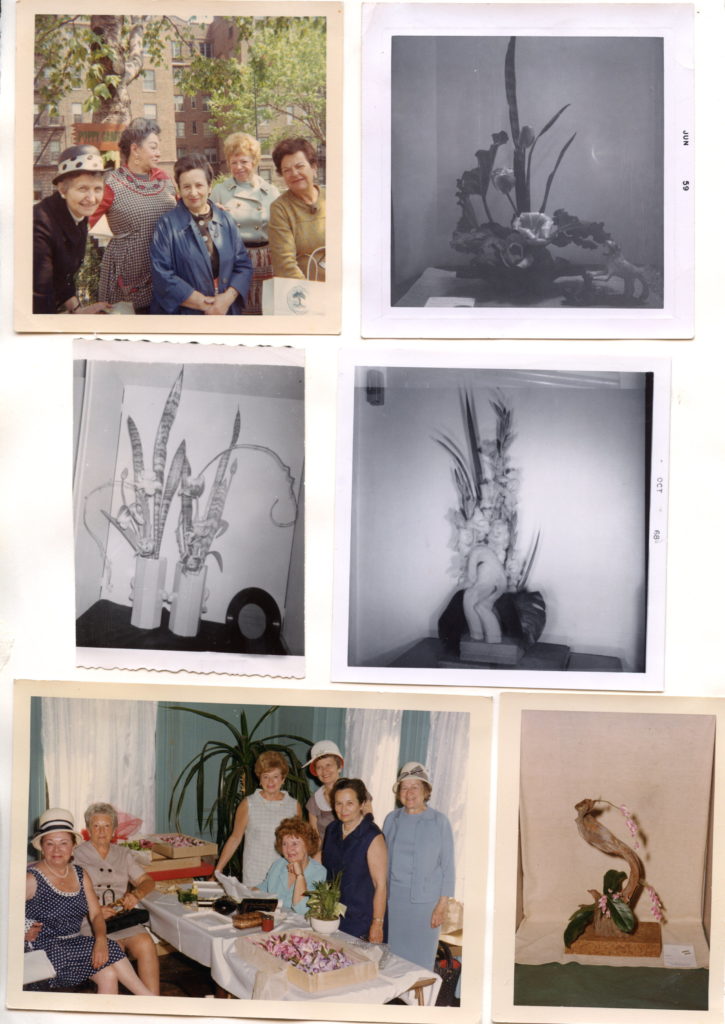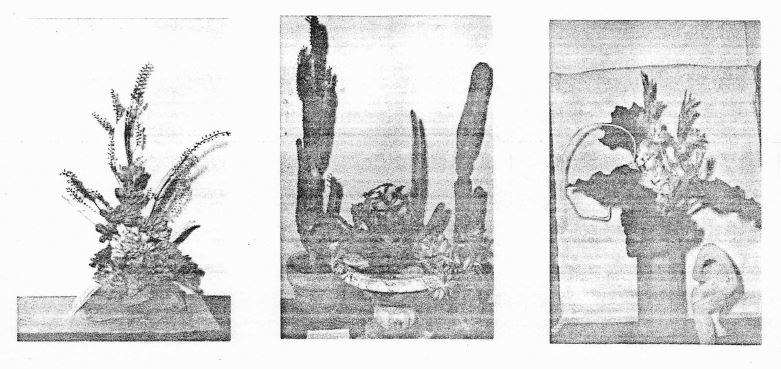1951
David Freudenthal tried all the time to help us. He was successful in convincing me that I should buy a car, and now he was after me to buy a house. He did not know that I had only a relatively small amount in the bank, not at all enough, to think about buying a house. But he did not let go and finally succeeded. He did not say it, but let me feel it that he will be helpful with money, by saying “don’t worry” a few times. We often drove around in my car to look for a house, which would not be too far away from our home on Ocean Avenue.
And one day we found one, which had a sign “For Sale”. We contacted the real estate broker, and soon looked inside that house at the corner of Rogers Avenue and Sullivan Place. It was in a very good neighborhood, very nice from outside, had a nice garden, was also nice inside, but I could not see, how I could have an office there. There was a large cellar, where there was a metal heater and next to it a heap of coal for heating of the house. It was accessible from the kitchen over a wooden staircase, but there were only a few narrow cellar windows and no door to the street. I thought that it is impossible to build an office there, especially since the ceiling was very low, but that, David said, would not matter. And he showed me that a door could be made out to the street, and outside 3 or 4 stairs, since the cellar was a little below street level. We soon measured the whole cellar, which had in the far back a little extra room. At home, I drew an outlay on a paper with little squares, each square representing one foot, and I found that it would really be possible to build there an office.
The price for the house was $14.000.- and David asked me, whether I had $ 1.000.-. That I had, and he said that he would lend me the other 13.000.- at 4 1/2 interest. I would need a few thousand dollars for the construction work and that was really about all I had. I drove Hedy and the children to the house and they liked it and Johanna was especially enthusiastic. So, we bought the house, and our friend Charles Waters, who was a lawyer, drew up the contract and all the papers.
It was agreed that I would take over the house on May 1st, 1951, but that the construction work could start earlier. Our friend Harold Walker recommended a builder very warmly and an agreement was made with Mr. Jakubowski regarding the price for the construction, putting down in writing all the details, including laying of lines for water, heating, canalization, also electric work, floors, a new staircase to the kitchen, a separate boiler room and laundry, a new toilet, also a staircase at the entrance to the office with two metal banisters, a lantern on a post at the corner and two lamps at the entrance door, all the partitions and doors for the waiting room, office room, toilet, and boiler room, a larger window in my office room and many, many more items, too much to be mentioned here. Everything was done perfectly well at a cost of about 6 or 7.000.-dollars, and I could move in exactly on May 1st, 1951. On the first day, when we moved in, the first patients came already in the afternoon, when the furniture and office equipment were not yet on the right place.
A detailed description of the house is appropriate for those readers, who did not know the house. On the main floor, which had a separate entrance over a few stairs on Sullivan Place, were, next to the entrance door, a closed-in porch with 3 front- and one side-window, then a good-sized living room with one window, then a dining room with 3 windows, a large middle window, and side by side two smaller windows, and a kitchen with one window, going out into the garden. All the windows had a view into the garden, since the house was recessed, separated by about ten feet from the street. All around the garden was a hedge. There was also a garage and a bigger garden between the kitchen and the side of the garage. From a little railway next to the kitchen, a staircase led down to the garden, and the garden had a separate door leading out into the street. From the hallway next to the kitchen a staircase went down to the lower floor, where the office was. There was downstairs, next to the staircase, a toilet with a washbasin, and, next to it a door to the boiler room, where a modern boiler and oil tank were installed, later also a modern washing machine and dryer and a washbasin. From the last stair of the staircase was a narrow hallway leading to the office door, but halfway in that hallway was the exit to the street, on one side and on the opposite side the entrance to the waiting room. The waiting room and the office room next to it were of a good size and next to the office room was another little room, which I used as a treatment room and laboratory. Both these rooms had washbasins. The waiting room and the smaller room had good air conditioners. The waiting room had on the walls about 18 showcases with butterflies and looked like a museum room. I also had a big aquarium there.
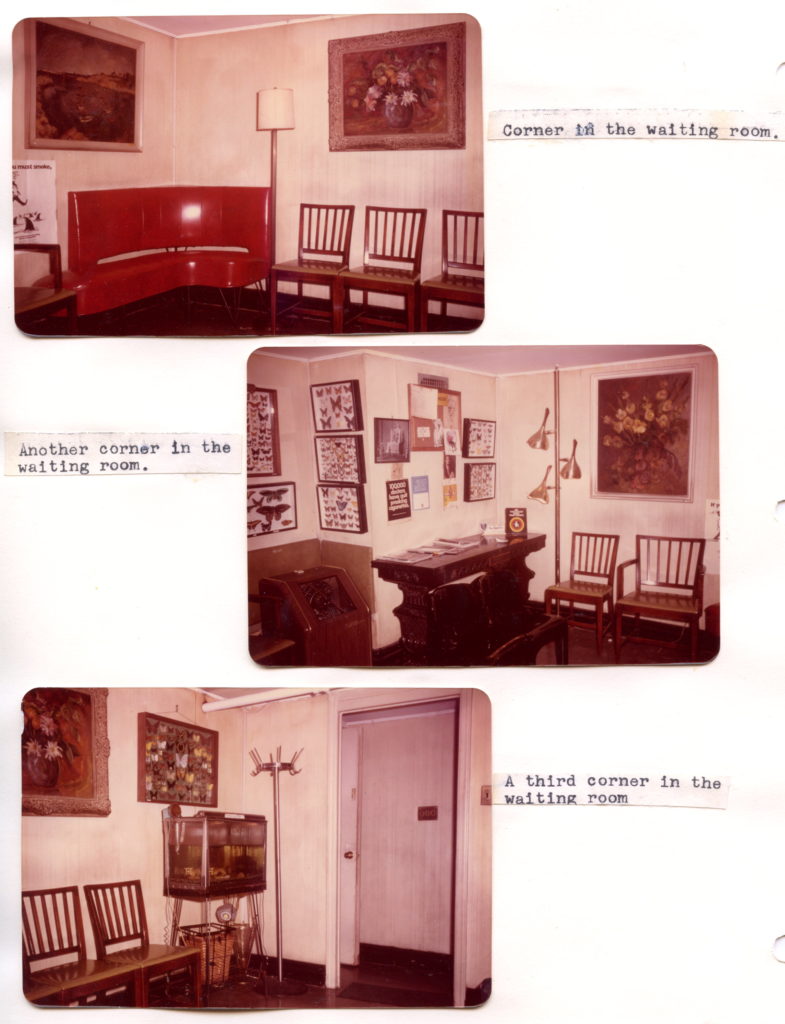
Going back to the main floor, there was a staircase going up to our bedrooms, one master bedroom, one little room for Francis, and one room for Johanna, and between the master bedroom and Francis’ room was a bathroom. From that upper floor led a staircase up to the attic, where there were two small rooms, one of them with a washbasin, which we rarely used for sleeping, and two storage rooms.
We had beautiful plants in the garden, which consisted of three parts, one on Sullivan Place, where there were also two trees, a mulberry tree and a good-sized boxwood tree, a second part on Rogers Avenue, with a mountain-ash tree and a silktree, quite big and flowering in July and August, through which a passageway led to the entrance of the office, and a third garden, the biggest one, measuring about 20 feet on each side, with a very big magnolia tree and an orange tree of a special kind, and beautiful plants, of which Hedy took care, also rose bushes and a big pyrocanter bush. I had planted three maple trees in the street, at the edge of the sidewalk, two on Rogers Avenue and one on Sullivan Place, shortly after we had moved in. The one on Sullivan Place we lost in a storm, but the other two developed into enormous trees in the course of over 20 years, and the Magnolia tree, which I had planted as a small tree next to the garage, had become a very big tree, a pleasure to look at when it was blooming early in spring.
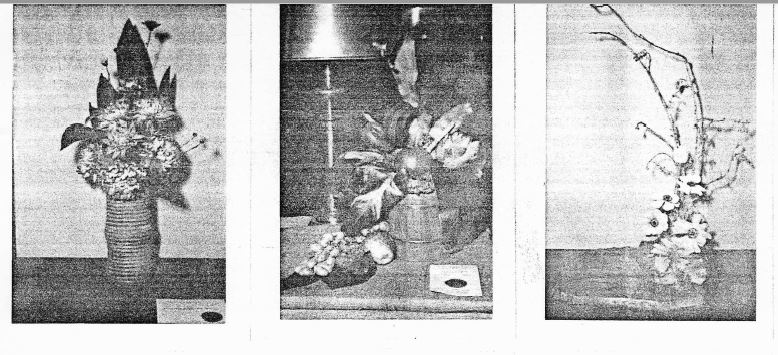
Hedy had become a member of two garden clubs and knew much about gardening, was for a few years also president of one of the garden clubs. I had a man for cutting the grass, for trimming the hedge, and for cleaning of the sidewalk, which was especially important in winter. The location of the office was very good, since there was a subway station, one block away, and a bus line on Empire Boulevard, with a stop at Rogers Avenue, half a block away. My practice grew very fast and my Spanish, which I spoke fluently, was very helpful in that. The neighborhood was very good at that time, when a better kind of middle-class people lived there and in all the side streets. That, unfortunately, changed greatly in later years, when a lower class of people moved in, coming down from the Bedford-Stuyvesant area and beyond Eastern Parkway, which caused many people to sell their houses and move away. More about that later. But when I started there, my practice flourished and improved from year to year.
I will now deviate from my regular biography and describe two interesting cases, strictly medical, which show more than anything else, what my activities were in medicine.
Toward the end of the year 1951, David Freudenthal got sick. His disease started with mild fever, but he felt otherwise well. I examined his blood, did repeated white cell counts myself almost daily, but there was only a slight increase in the number of white cells. One day he told me that he had a little blood in the urine, just a few drops, but when I examined his urine, there was no blood. I sent him immediately for an X-ray examination of the kidneys, a so-called intravenous pyelography, which means that a certain dye was injected into a vein of his arm, and that caused a sharper outline of the kidneys and kidney pelvis. The result was negative, except that it showed that the left kidney was slightly lower than the right one. I went to pick up the X-ray pictures from the radiologist and looked at them, in my office on the screen. I saw a slight protuberance on the left kidney, and I went with the films to Manhattan to my friend Dr. Weiser, whom I had known from Vienna, who was an excellent urologist. He confirmed that there was a slight irregularity in the outline of the left kidney, and recommended, more X-ray pictures in different positions, to be made by him. David and Selma agreed and went to Dr. Weiser. The result of his examination was that there was definitely a slight protuberance in the left kidney and that an operation was necessary. The Freudenthals consulted another urologist, chief of urology in the Mount Sinai Hospital, Dr. Swick, who also confirmed the diagnosis, and the Freudenthals agreed that Dr. Weiser should do the operation in the Misericordia Hospital, which was at that time on East 86th Street. Dr. Swick came to watch the operation. It was done in January of 1952. When the kidney was out and cut into two halves, it showed a round tumor of the size of a cherry, deep inside the kidney and near the kidney pelvis. Dr. Weiser did an especially fine job, going in deep and removing all the fat which always surrounds the kidney, going close to the large blood vessels, the aorta and vena cava, to make sure that he would thereby eliminate all lymph nodes, which may already contain cancer tissue. The diagnosis was, of course, cancer of the kidney, a so-called hypernephroma. The result of the operation was excellent, and David lived another 12 years. Through all these years, I was taking care of him.
They had great confidence in me in general and perhaps especially on account of something that had happened 3 years earlier in 1949, when their housekeeper, Pauline, got sick. That was a Polish woman, who had been with them for about 30 years, and was treated like a member of the family. One day, Pauline got severe abdominal pains. They lived then on 36 Fuller Place in Brooklyn. They called me and I found her with a so-called acute abdomen, severe tenderness in the right lower abdomen and fever. It could have been an acute appendicitis, perhaps a perforated appendix, but due to the severe tenderness it was impossible to make a definite diagnosis. It could, of course, also have been the right ovary, which caused the trouble. But one thing was certain: It required immediate surgery. Selma called a surgeon in the Methodist Hospital, which was nearby, who got her a bed there, and we all accompanied Pauline by car to that hospital. We waited there long till the surgeon whose name I will not mention arrived. He went straight to the patient and examined her. I was near the bed – he did not know that I was a doctor, since there was no opportunity for anybody to introduce me to him – and I heard him say at the end: “Don’t worry, I am not going to cut you up.” He came then out and spoke to Selma and David and told them the same thing, that he was not going to operate, but will treat her with Penicillin. I was then introduced to him, and I could see in his expression that the situation was unpleasant for him. He knew what he had done. This was a case of an acute abdomen that should have been operated on immediately. I could not say anything, as it would have been embarrassing for him. So, we went home. The next day I visited her. The fever and pain continued. 5 days later, she was on the operating table. I was there. While she was being prepared, and the surgeons washing their hands, she was already under anesthesia. She was then catheterized, which is being done routinely before operations, but what I saw then, astonished me: The head nurse came and, in order to get the last drops of urine out of the bladder, pressed her hand with great force into the abdomen, the lowest part of it in the center, where the bladder is. I don’t remember ever to have seen such a thing before. No wonder what the surgeon found, when he opened the abdomen: An enormous amount of grayish fluid, in which polypoid tumor particles were swimming. It was a bursted ovarian cyst, bursted a few minutes before under the pressing hand of the nurse. It was a terrible thing to see. Thousands of little pieces of tissue floating all over. Without the pressing of the nurse’s hand, the cyst was probably still unbroken and could have been removed as one piece. It was a cancerous cyst, as it is often being seen, with polypous masses inside, still contained by a firm sac. Pauline was relatively young then, and could have been alive today, if the surgeon had operated on her, when I had sent her to the hospital. Even then, when she was operated on, 5 days later, it may still have been in time. But the cyst was burst and everything was lost. The tumor particles were spread all over in the abdomen, and cleaning was impossible. They removed the bursted sac and closed the abdomen, and she recuperated gradually. We knew that she was doomed and saw her deteriorate. There was much suffering, and she had to be at the end in the Kings County Hospital for over a year. The Freudenthals visited her daily, were good to her like to a relative. She died in 1951, more than two years after the operation. A sad case of poor judgment by the doctor, and in addition to it a mishap, ending the life of a patient.
